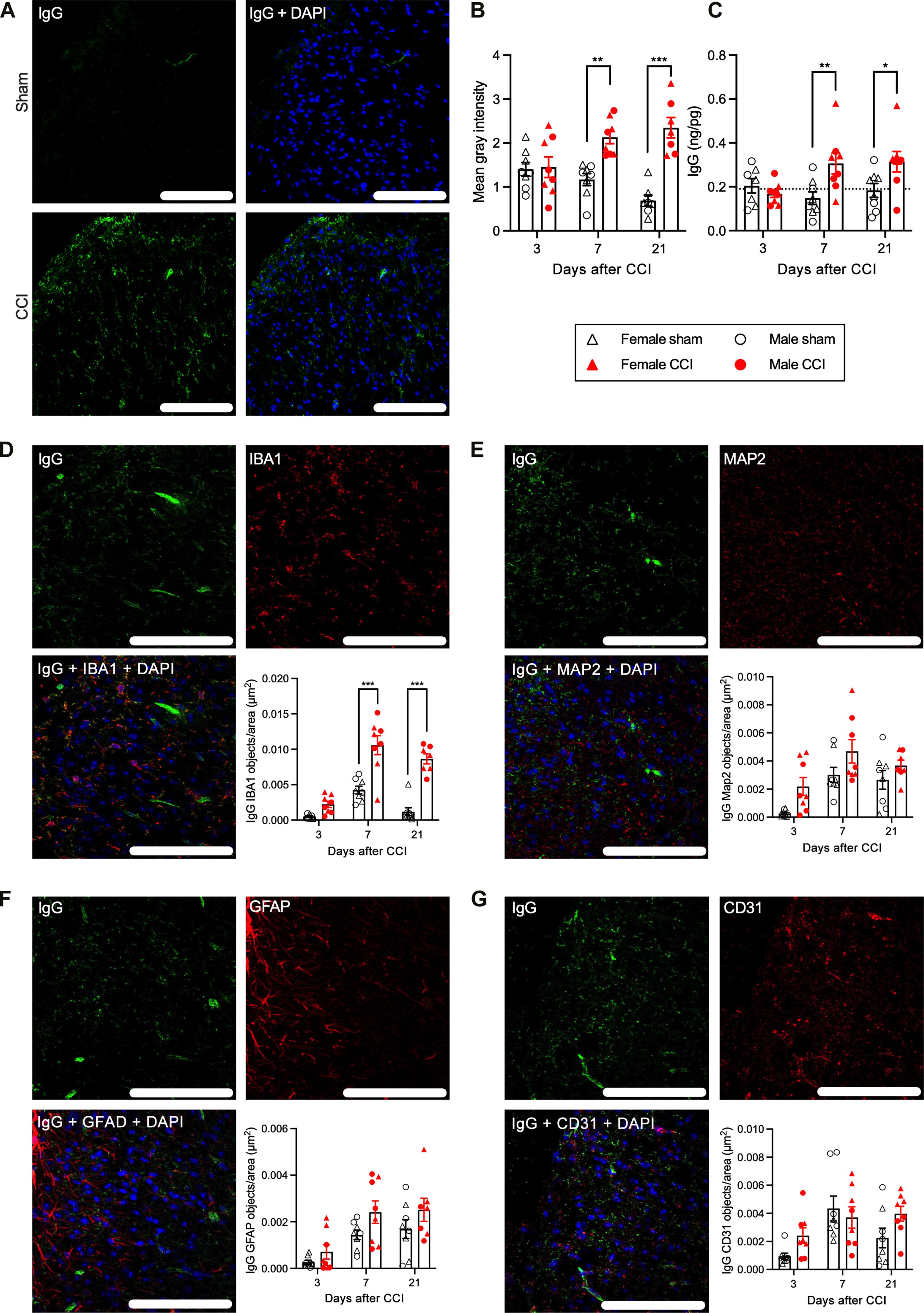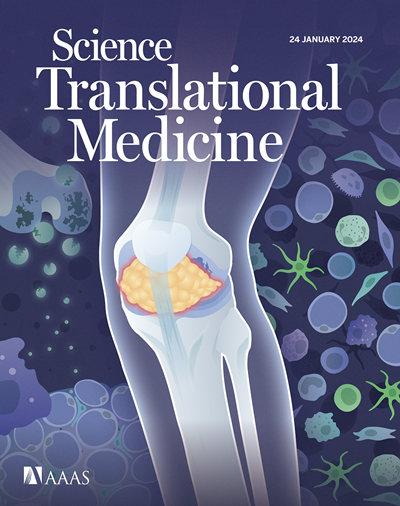B cells drive neuropathic pain–related behaviors in mice through IgG–Fc gamma receptor signaling
IF 15.8
1区 医学
Q1 CELL BIOLOGY
引用次数: 0
Abstract
Neuroimmune interactions are essential for the development of neuropathic pain, yet the contributions of distinct immune cell populations have not been fully unraveled. Here, we demonstrate the critical role of B cells in promoting mechanical hypersensitivity (allodynia) after peripheral nerve injury in male and female mice. Depletion of B cells with a single injection of anti-CD20 monoclonal antibody at the time of injury prevented the development of allodynia. B cell–deficient (muMT) mice were similarly spared from allodynia. Nerve injury was associated with increased immunoglobulin G (IgG) accumulation in ipsilateral lumbar dorsal root ganglia (DRGs) and dorsal spinal cords. IgG was colocalized with sensory neurons and macrophages in DRGs and microglia in spinal cords. IgG also accumulated in DRG samples from human donors with chronic pain, colocalizing with a marker for macrophages and satellite glia. RNA sequencing revealed a B cell population in naive mouse and human DRGs. A B cell transcriptional signature was enriched in DRGs from human donors with neuropathic pain. Passive transfer of IgG from injured mice induced allodynia in injured muMT recipient mice. The pronociceptive effects of IgG are likely mediated through immune complexes interacting with Fc gamma receptors (FcγRs) expressed by sensory neurons, microglia, and macrophages, given that both mechanical allodynia and hyperexcitability of dissociated DRG neurons were abolished in nerve-injured FcγR-deficient mice. Consistently, the pronociceptive effects of IgG passive transfer were lost in FcγR-deficient mice. These data reveal that a B cell–IgG–FcγR axis is required for the development of neuropathic pain in mice.

B 细胞通过 IgG-Fc γ 受体信号驱动小鼠神经性疼痛相关行为
神经免疫相互作用对神经病理性疼痛的发展至关重要,但不同免疫细胞群的贡献尚未完全阐明。在这里,我们证明了 B 细胞在促进雄性和雌性小鼠周围神经损伤后机械过敏(异动症)中的关键作用。在损伤时注射一次抗 CD20 单克隆抗体以消耗 B 细胞,可防止异感症的发生。B细胞缺失(muMT)小鼠同样不会出现异感症。神经损伤与同侧腰椎背根神经节(DRGs)和脊髓背侧的免疫球蛋白 G(IgG)积累增加有关。IgG 与感觉神经元、DRG 中的巨噬细胞和脊髓中的小胶质细胞共定位。在患有慢性疼痛的人类供体的DRG样本中也有IgG聚集,并与巨噬细胞和卫星胶质细胞的标记物共定位。RNA 测序揭示了天真小鼠和人类 DRG 中的 B 细胞群。B细胞转录特征在患有神经性疼痛的人类供体的DRG中富集。受伤小鼠的 IgG 被动转移会诱发受伤的 muMT 受体小鼠的异动症。IgG的代痛觉效应可能是通过免疫复合物与感觉神经元、小胶质细胞和巨噬细胞表达的Fcγ受体(FcγRs)相互作用而介导的,因为在神经损伤的FcγR缺陷小鼠中,机械异感和离体DRG神经元的过度兴奋都被取消了。同样,在 FcγR 缺失的小鼠中,IgG 被动转移的代痛觉效应也消失了。这些数据揭示了小鼠神经病理性疼痛的发生需要B细胞-IgG-FcγR轴。
本文章由计算机程序翻译,如有差异,请以英文原文为准。
求助全文
约1分钟内获得全文
求助全文
来源期刊

Science Translational Medicine
CELL BIOLOGY-MEDICINE, RESEARCH & EXPERIMENTAL
CiteScore
26.70
自引率
1.20%
发文量
309
审稿时长
1.7 months
期刊介绍:
Science Translational Medicine is an online journal that focuses on publishing research at the intersection of science, engineering, and medicine. The goal of the journal is to promote human health by providing a platform for researchers from various disciplines to communicate their latest advancements in biomedical, translational, and clinical research.
The journal aims to address the slow translation of scientific knowledge into effective treatments and health measures. It publishes articles that fill the knowledge gaps between preclinical research and medical applications, with a focus on accelerating the translation of knowledge into new ways of preventing, diagnosing, and treating human diseases.
The scope of Science Translational Medicine includes various areas such as cardiovascular disease, immunology/vaccines, metabolism/diabetes/obesity, neuroscience/neurology/psychiatry, cancer, infectious diseases, policy, behavior, bioengineering, chemical genomics/drug discovery, imaging, applied physical sciences, medical nanotechnology, drug delivery, biomarkers, gene therapy/regenerative medicine, toxicology and pharmacokinetics, data mining, cell culture, animal and human studies, medical informatics, and other interdisciplinary approaches to medicine.
The target audience of the journal includes researchers and management in academia, government, and the biotechnology and pharmaceutical industries. It is also relevant to physician scientists, regulators, policy makers, investors, business developers, and funding agencies.
 求助内容:
求助内容: 应助结果提醒方式:
应助结果提醒方式:


